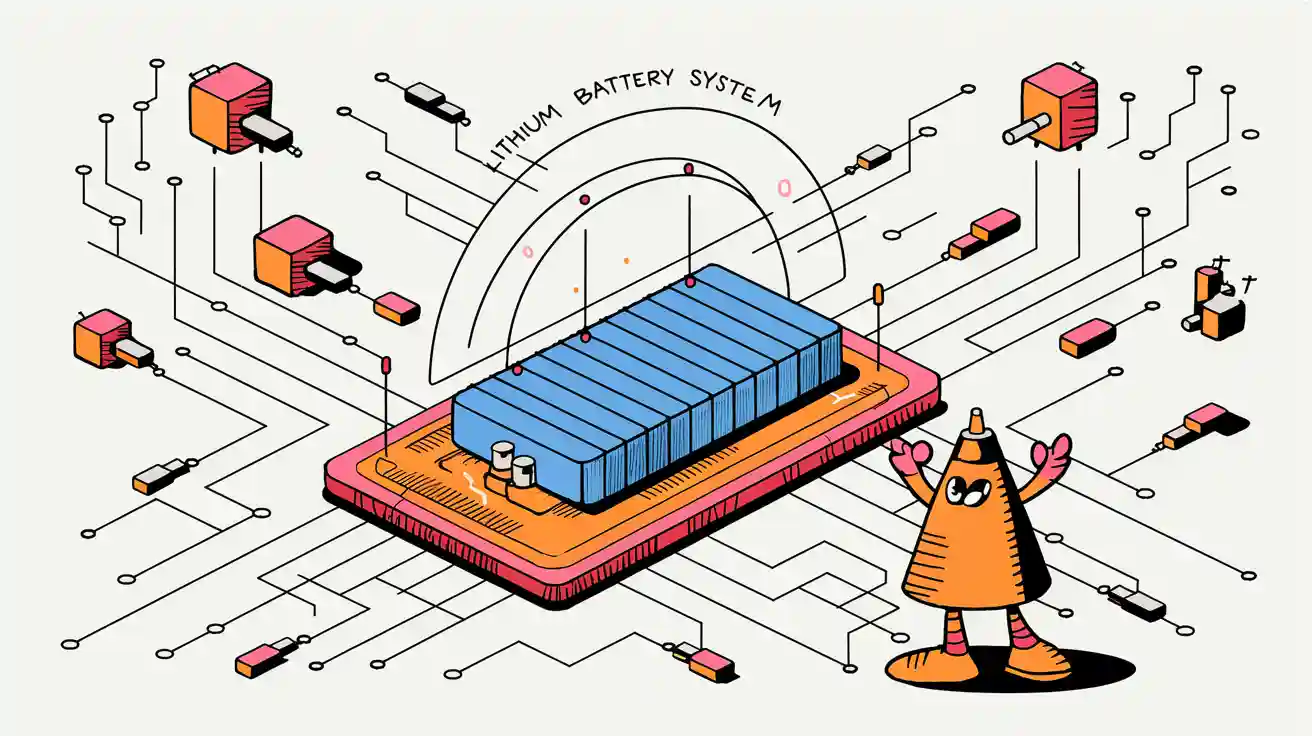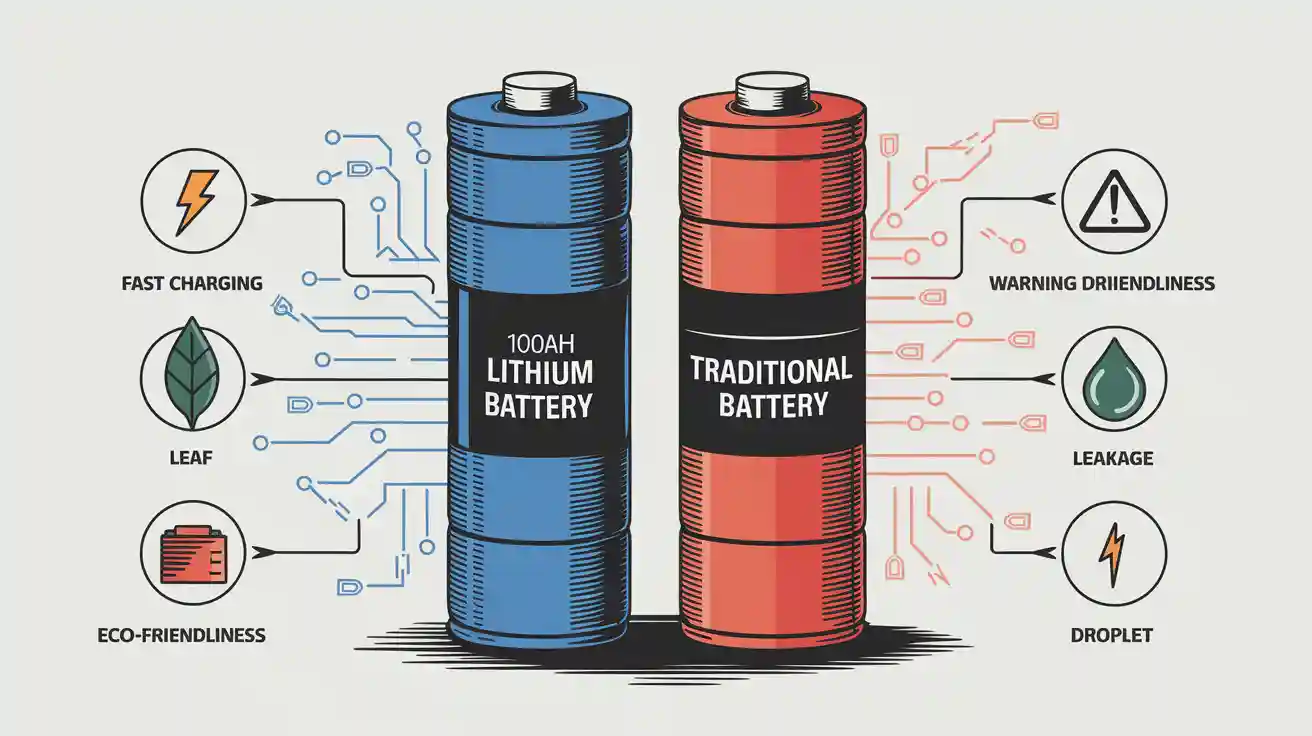Contents
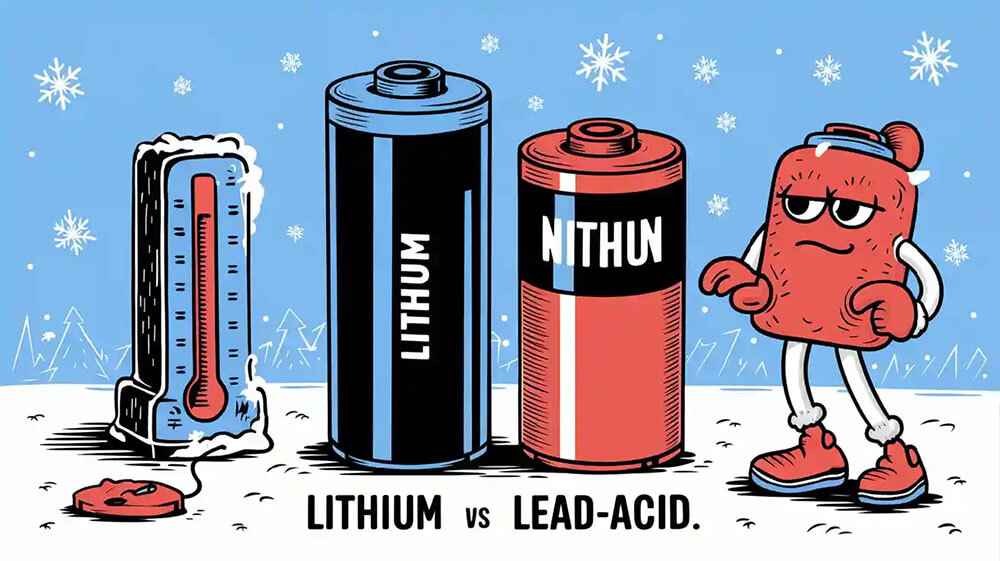
Cold weather can significantly impact the performance and reliability of batteries, particularly when comparing lithium battery vs lead-acid batteries in the cold weather. You might notice a drop in efficiency when temperatures plummet, especially in applications like electric vehicles or energy storage systems. Studies reveal that freezing conditions reduce the range of electric vehicles by up to 20%. Lithium-ion batteries, while efficient, cannot be charged below 0°C due to risks like lithium plating, which causes permanent damage. On the other hand, lead-acid batteries tolerate extreme temperatures better, with a freezing point as low as –55°C when fully charged. Understanding the performance of lithium battery vs lead-acid batteries in the cold weather is essential to choosing the right battery for cold environments.
Key Takeaways
Lithium batteries keep 70% of their power at 0°F. Lead-acid batteries only keep 45%. This makes lithium better for cold places.
Lithium batteries cost more at first. But they last longer and need less care, saving money over time, especially in cold weather.
Lead-acid batteries don’t freeze in very cold weather. But they wear out faster and need replacing more often, costing more in the long run.
Part 1: Key Differences in Cold Weather Performance
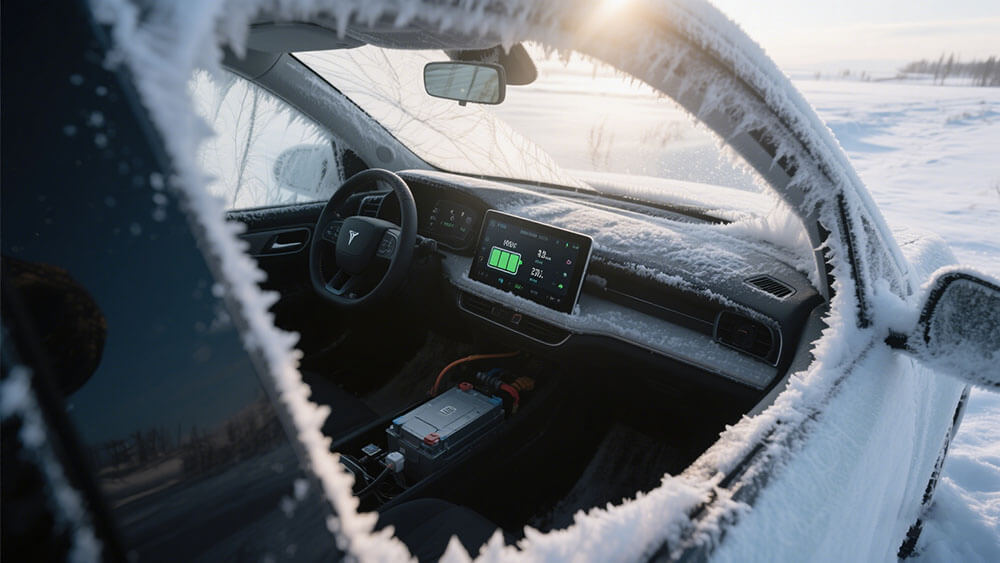
1.1 Lithium Battery Performance in Cold Weather
Lithium batteries are known for their efficiency, but cold temperatures can challenge their performance. When the temperature drops below 32°F, these batteries cannot charge effectively due to the risk of lithium plating, which can cause permanent damage. However, they maintain 80-90% of their capacity even at sub-zero temperatures, making them a reliable choice for cold environments. At 0°F, lithium batteries discharge at 60% of their capacity, which is significantly higher than many alternatives.
Charging rates for lithium batteries decrease as temperatures drop. For instance, at -10°C, the charging rate should not exceed 1C, and at -20°C, it should be limited to 0.05C. Despite these limitations, lithium batteries do not require overdesign for cold weather, which simplifies their integration into various systems. Their ability to endure up to 5,000 partial cycles further enhances their suitability for cold climates, offering greater performance and longevity compared to other battery types.
1.2 Lead-Acid Battery Performance in Cold Weather
Lead-acid batteries have been a traditional choice for many applications, but their cold temperature performance is less impressive than lithium batteries. At 0°F, lead-acid batteries discharge at only 45% of their capacity, which is significantly lower than lithium batteries. While they can accept low current charges in cold temperatures, their overall efficiency and energy output decrease rapidly as the temperature drops.
One advantage of lead-acid batteries is their ability to tolerate extreme cold without freezing, provided they are fully charged. Their freezing point can reach as low as -55°C, making them a viable option for certain applications. However, their shorter lifespan and higher degradation rate in cold conditions often result in more frequent replacements, which can increase long-term costs.
1.3 Comparative Analysis: Lithium vs Lead-Acid Batteries in the Cold Weather
When comparing lithium battery vs lead-acid batteries in the cold weather, the differences in performance become clear. Lithium batteries maintain better energy output and efficiency in cold temperatures, discharging at 60% of their capacity at 0°F compared to 45% for lead-acid batteries. They also offer a longer lifespan, enduring thousands of partial cycles, whereas lead-acid batteries degrade more quickly in cold conditions.
Cold temperatures affect all battery types, but lithium batteries demonstrate greater resilience. They do not require overdesign for cold weather, and their capacity remains relatively stable even in freezing conditions. In contrast, lead-acid batteries experience significant energy depletion and require more frequent replacements, making them less cost-effective for long-term use in cold climates.
The electrochemical reactions in lithium batteries are less affected by extreme cold, which helps preserve their operational life. Advanced models and hybrid energy storage systems can further optimize their performance, ensuring reliability in harsh environments. While lead-acid batteries may tolerate extreme cold without freezing, their lower efficiency and shorter lifespan make them less suitable for applications requiring consistent performance in cold weather.
Part 2: Energy Efficiency and Discharge Rates
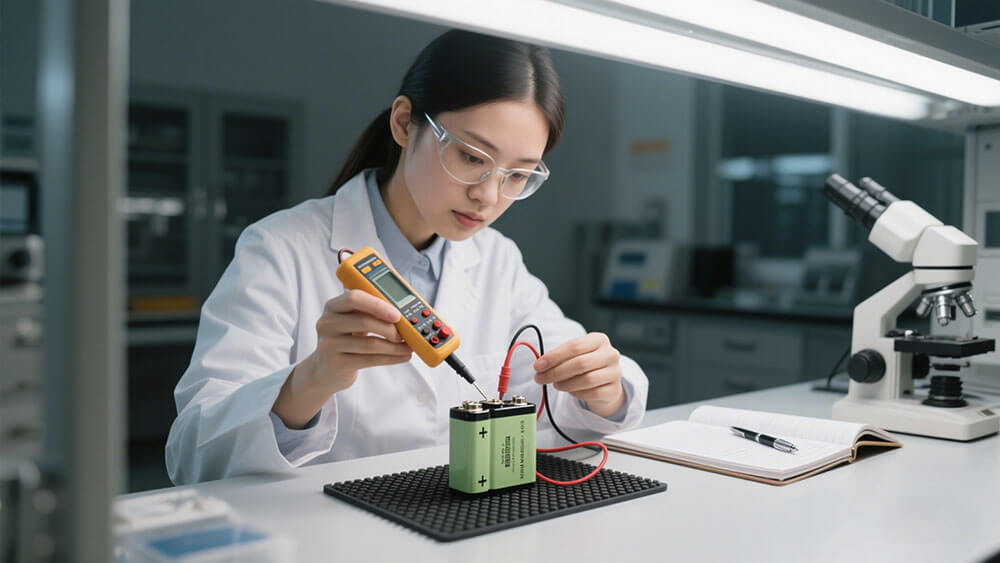
2.1 Efficiency of Lithium Batteries in Extreme Temperatures
Lithium batteries demonstrate remarkable energy efficiency across a wide range of temperatures, but extreme cold can challenge their performance. At low temperatures, their charge energy retention drops to 80%, and discharge energy retention falls to 75%. Despite this, their overall energy efficiency remains above 75%, making them a reliable choice for cold climates. Studies show that lithium batteries retain over 96% of their charge energy even after 28 days at room temperature, highlighting their long-term stability.
Scenario-based analyses reveal that colder conditions exacerbate efficiency losses, particularly when batteries are deeply discharged. For instance, at 4°C, batteries discharged at higher currents (2A) exhibit lower state of efficiency (SOE) compared to those discharged at lower currents (1A). This underscores the importance of managing discharge rates to optimize battery efficiency in cold weather.
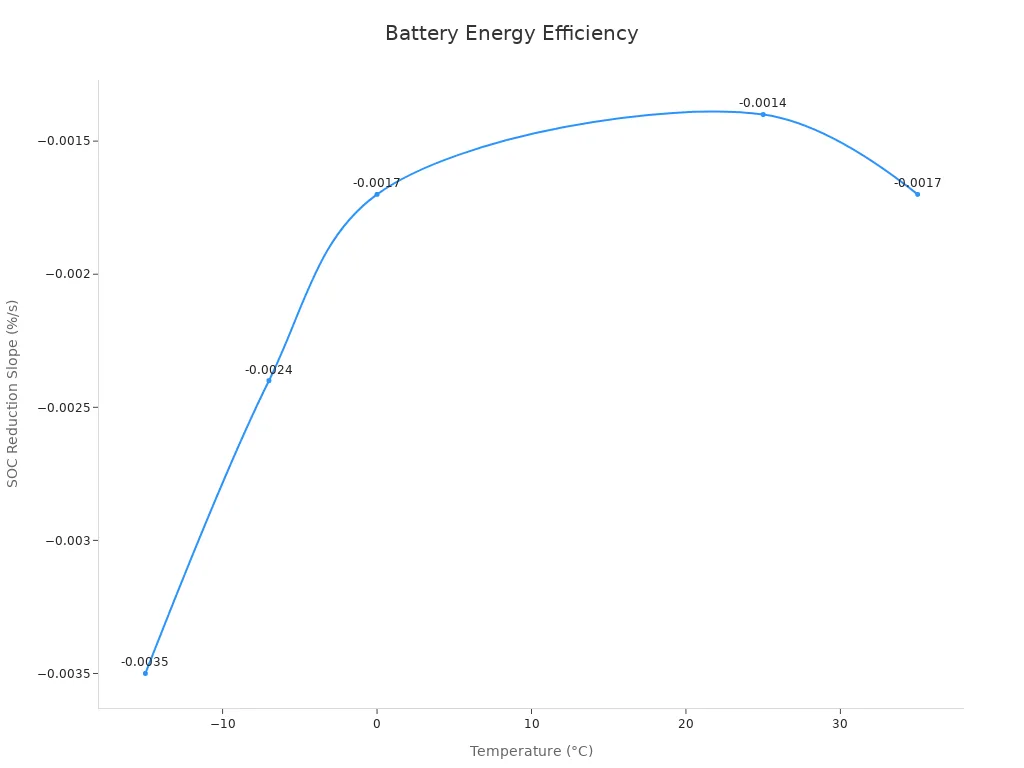
2.2 Efficiency of Lead-Acid Batteries in Extreme Temperatures
Lead-acid batteries, while robust, experience significant efficiency declines in cold weather. Research indicates that their optimal performance occurs at 25°C, but efficiency drops sharply as temperatures fall. At sub-zero temperatures, the electrolyte’s freezing point becomes a critical factor, often limiting discharge efficiency. For example, at -10°C, the slower kinetics of electrochemical reactions reduce energy output, though this also minimizes degradation.
Empirical studies highlight that lead-acid batteries age faster in extreme heat but show negligible degradation in cold conditions. However, their cold-cranking performance—critical for applications like automotive batteries—suffers significantly below 0°C. This makes them less suitable for scenarios requiring consistent energy output in freezing environments.
2.3 Discharge Rate Comparison in Cold Weather
When comparing discharge efficiency in cold weather, lithium batteries outperform lead-acid batteries by a significant margin.For example, At 0°F, lithium batteries discharge at 60% of their capacity, while lead-acid batteries manage only 45%. This disparity stems from the superior electrochemical stability of lithium batteries, which allows them to maintain higher energy output even in freezing conditions.
The following table illustrates the impact of temperature on battery efficiency and state of charge (SOC) reduction:
Temperature (°C) | Median Regenerative Braking Power (kW) | IQR (kW) | SOC Reduction (%) |
|---|---|---|---|
-15 | 0 | N/A | 12.7 |
-7 | 24.2 | 30.6 | 8.9 |
25 | 38.9 | 28.2 | 5.3 |
35 | 56.6 | 41.2 | 5.9 |
This data highlights the resilience of lithium batteries in maintaining higher discharge efficiency and lower SOC reduction compared to lead-acid batteries, particularly in extreme cold.
Part 3: Cost-Effectiveness for Cold Weather Applications
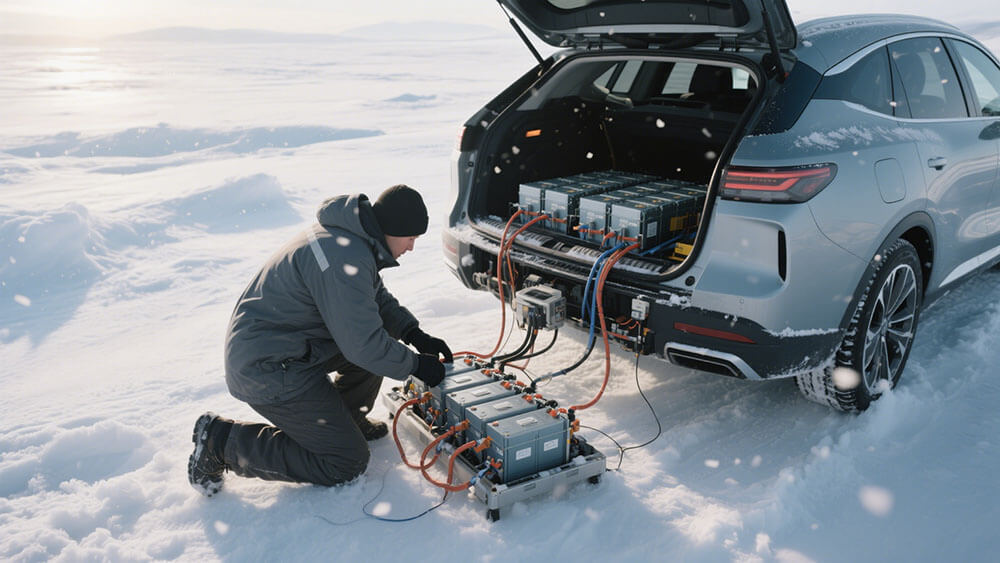
3.1 Initial Investment: Lithium vs Lead-Acid Batteries
When evaluating the initial investment for lithium battery vs lead-acid batteries in the cold weather, you’ll notice a significant difference in upfront costs. Lithium batteries typically have a higher price tag due to their advanced technology and longer lifespan. For instance, a 24V lithium-ion battery with a 100Ah capacity costs between $1,500 and $2,000, whereas a comparable lead-acid battery with a 250Ah capacity ranges from $600 to $800. This price disparity often makes lead-acid batteries more appealing for budget-conscious buyers.
However, the initial cost doesn’t tell the whole story. Lithium batteries require fewer replacements over time, which offsets their higher upfront expense. A case study from the Svalbard Global Seed Vault demonstrated this advantage. By switching to lithium iron phosphate (LiFePO4) batteries in 2022, the facility reduced its backup power maintenance from six times a year to once every two years. This highlights how lithium batteries can provide long-term value despite their higher initial cost.
3.2 Long-Term Cost Savings in Cold Climates
In cold climates, the long-term cost savings of lithium batteries become even more apparent. These batteries maintain better performance in freezing temperatures, reducing the need for frequent replacements and minimizing operational disruptions. For example, lithium batteries retain 65% of their capacity at -20°C when equipped with self-heating technology, while lead-acid batteries lose 40% of their capacity under the same conditions. Additionally, lead-acid batteries often require thermal blankets to function in extreme cold, adding $15 per watt to their overall cost.
Lithium batteries also incur lower maintenance expenses. Unlike lead-acid batteries, which degrade faster in cold weather and require regular servicing, lithium batteries offer a longer lifespan and reduced maintenance needs. Cold storage facilities that switched to lithium batteries reported lower energy bills and fewer delays, further emphasizing their cost-effectiveness in harsh environments.
3.3 Total Cost of Ownership for Extreme Temperature Performance
When considering the total cost of ownership, lithium batteries outperform lead-acid batteries in cold weather applications. While lead-acid batteries may seem cost-effective initially, their shorter lifespan and higher maintenance requirements increase their overall cost. For example, lead-acid batteries typically last five years and require two replacements per year in demanding conditions. In contrast, lithium batteries last up to ten years and need only 0.5 replacements annually.
The economic benefits of lithium batteries extend beyond their durability. Their reliable performance in cold environments reduces operational delays, which can be costly in industries like logistics and energy storage. Additionally, lithium batteries’ higher energy efficiency translates to lower electricity costs over time. A study assessing the perceived cost of ownership (PCO) for electric light-duty commercial vehicles in cold climates found that lithium batteries offer significant savings through their longevity and efficiency.
By investing in lithium batteries, you can achieve long-term savings and enhanced reliability, making them a superior choice for cold weather applications. Their ability to maintain performance in extreme temperatures, coupled with lower maintenance and replacement costs, ensures a more cost-effective solution over time.
Tip: For professional guidance on lithium batteries cost-effective solution, visit Large Power.
Lithium and lead-acid batteries perform differently in cold weather. Lithium batteries offer better efficiency, longer lifespan, and higher discharge rates, making them ideal for extreme climates. Lead-acid batteries, while cheaper upfront, degrade faster in freezing conditions. Choose lithium batteries for reliability and cost-effectiveness in cold environments. Optimize performance by managing discharge rates and using self-heating technology.
FAQ
1. Can lithium batteries be charged in freezing temperatures?
Lithium batteries cannot charge below 0°C due to risks like lithium plating. Use self-heating technology or pre-warming methods to enable safe charging in cold weather.
2. How do lead-acid batteries perform in sub-zero temperatures?
Lead-acid batteries discharge at only 40% capacity at 0°F. Fully charged batteries tolerate extreme cold but lose efficiency and degrade faster in freezing conditions.
3. Are lithium batteries worth the higher upfront cost for cold climates?
Yes, lithium batteries offer better efficiency, longer lifespan, and lower maintenance costs. Their performance in cold weather offsets the initial investment over time. Large Power offers tailored lithium battery solutions for cold weather.


